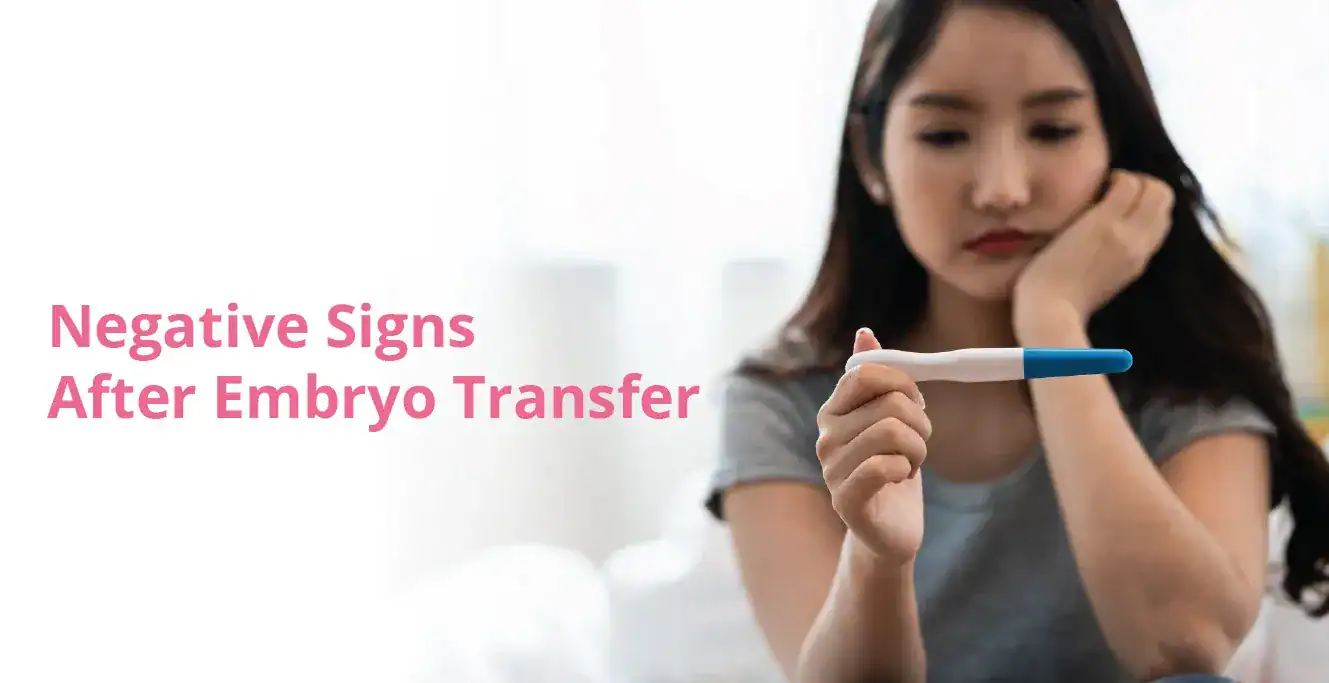
What is the Unilateral Tubal Blockage?

Table of Contents
Introduction
The process of reproduction in the female body begins with the ovaries. Ovaries produce eggs every month, which pass through the fallopian tubes into the uterus as they get fertilized by sperm. On successful fertilization, the woman experiences pregnancy.
However, certain conditions may interfere with the passage of eggs from the ovaries into the uterus.
A tubal blockage is one of the many potential causes of infertility in women. It obstructs the passage of the egg and results in other symptoms that may or may not be noticeable.
Let’s take an in-depth look at the factors causing a tubal blockage.
What is the Unilateral Tubal Blockage?
A unilateral tubal blockage is a condition in the female reproductive system due to which there is an occlusion in only one of the fallopian tubes. The other fallopian tube remains unaffected and fully functional.
There are multiple reasons for the swelling and blockage in one of the fallopian tubes, including sexually transmitted diseases, miscarriages, and abortions.
A unilateral tubal blockage is one of the more common causes of infertility in women. While the eggs produced from one ovary can travel through the fallopian tube on one side unobstructed, the other fallopian tube remains blocked. This severely reduces the chances of a successful pregnancy in women.
In certain cases, it may even cause infertility.
Unilateral tubal blockage reasons
The most common cause of tubal blockage in fallopian tubes is the presence of pelvic adhesions or scar tissue.
There are multiple reasons for the development of these factors in a woman’s tubes, aside from the common risk factors discussed earlier: tubal TB, tubal endometriosis, ectopic pregnancy, pelvic inflammatory disease, septic abortion, and exposure to DES.
– Specific Sexually Transmitted Diseases (STDs)
Certain sexually transmitted diseases like chlamydia and gonorrhoea can cause scar tissue in the fallopian tubes, resulting in unilateral tubal blockage.
– Fibroids
Fibroids are non-cancerous growths that occur in a woman’s uterus during pregnancy. While they are not cancerous, they can block the fallopian tubes in the region that attaches to the uterus, causing a unilateral tubal blockage.
– Past surgeries
If you have undergone a surgical procedure in the abdominal area, the scar tissue may bind together and create a pelvic adhesion. Pelvic adhesions are the most common cause of unilateral tubal blockages, as they cause two organs in your body to stick together.
Additionally, if you have undergone a surgical procedure on the fallopian tube itself, it may increase the risk of acquiring a blockage.
Many of the causes of unilateral tubal blockage are out of your control. However, by practising hygienic and protected sexual habits, you can decrease your exposure to STDs which is one of the major causes of tubal blockage.
Symptoms of unilateral tubal blockage
The symptoms of unilateral tubal blockage are evasive. Some women experience certain symptoms, while others may go without feeling anything at all. On a generic scale, unilateral tubal blockage presents the following symptoms.
- Having trouble conceiving or experiencing complications during pregnancy
- Pain in the lower abdomen is the most common symptom, accompanied by pain in the lower back as well
- In some cases, women experience mild but continuous/regular pain on one side of the abdomen
- Decreased chances of fertility or the complete loss of it
- Vaginal discharge is also one of the symptoms of unilateral tubal blockage
- Additionally, if a unilateral blockage results from one of the underlying risk factors or causes, they may come with their own symptoms. For example, a unilateral tubal blockage as a result of chlamydia will display all the symptoms of chlamydia
Diagnosis of unilateral tubal blockage
The most common method that professional medical practitioners use to diagnose blockages in fallopian tubes is Hysterosalpingography (HSG).
The doctor takes the help of X-Rays to observe your fallopian tubes from the inside, to help determine the presence of a blockage. The doctor will inject a dye into your fallopian tubes to see better.
If the doctor cannot conclude a diagnosis using the HSG method, further examination may be needed.
A more definitive way to determine tubal blockage is to use laparoscopy. In this procedure, the doctor inserts a small camera into your fallopian tube to determine where the blockage is.
Treatment for unilateral tubal blockage
The treatment your doctor chooses to use for a blocked fallopian tube depends on the severity and extent of the blockage.
If the blockage is minimal and doesn’t look very serious or consequential, the doctor may adopt a laparoscopic surgery to treat the tubal blockage.
On the other hand, if the blockage is severe with huge amounts of widespread scar tissue and pelvic adhesions, treatment may be nearly impossible.
Surgery may be a good option to repair the fallopian tubes that were blocked because of ectopic pregnancy. The damaged part of the fallopian tube is removed, and the healthy portion is connected back together.
Risks associated with unilateral tubal blockage
A woman may be at an increased risk of fallopian tube blockage if she experiences one or more of the following conditions.
– Pelvic inflammatory disease
An infection in one or more of the reproductive organs in a woman can cause a blockage in the fallopian tubes, increasing the risk of tubal blockage in women.
– Septic abortion
The process of abortion that is complicated by the presence of uterine infection or conditions like endometriosis can create conditions for a tubal blockage to occur.
– Exposure to in utero diethylstilbestrol
DES is the synthetic form of oestrogen. Exposure to DES during pregnancy can create the conditions for a tubal blockage to occur.
– Genital TB
Tubal tuberculosis significantly affects the fallopian tubes of a woman. Diseases such as these can cause tubal blockage.
– Tubal endometriosis
The condition where ectopic endometrial tissue is found implanted in the fallopian tubes is called tubal endometriosis. It may increase the risk of a tubal blockage.
– Ectopic pregnancy
Ectopic pregnancy happens when there is a partial blockage in one of the tubes. The egg is able to be fertilized, but it gets stuck in the fallopian tube.
If you have experienced one of these conditions before, you may consult your medical professional about the risks of tubal blockage.
Conclusion
A tubal blockage is one of the many potential causes of infertility in women. While the eggs produced from one ovary can travel through the fallopian tube on one side unobstructed, the other fallopian tube remains blocked.
Contact a doctor immediately if you suspect that you might be experiencing a tubal blockage. Visit Birla Fertility and IVF or book an appointment with Dr Muskaan Chhabra today.
FAQs:
1. How many types of tubal blockages are there?
There are three types of tubal blockages:
- Distal occlusion – This type of tubal blockage is seen at the ovarian side of the mouth of the fallopian tube. It also affects the fimbriae.
- Midsegment blockage – when the blockage lies somewhere in the middle of the fallopian tube, it is a midsegment blockage.
- Proximal blockage – this type of blockage occurs in the area close to the uterine cavity.
2. How common is the tubal blockage?
According to NCBI, 19% of women experience tubal blockage in primary interfertility, and 29% of women experience this condition in secondary infertility. This means that about 1 in every 4 women may experience a tubal blockage.
3. Do you ovulate every month with one fallopian tube?
Yes, even if you were born with a single fallopian tube or if one of the tubes is obstructed, your body still ovulates every month and releases an egg through the functional and healthy tube.
4. Does it take longer to get pregnant with one fallopian tube?
As long as there is nothing else affecting the health of your body’s reproduction system, one obstructed fallopian tube does not cause hindrances to get pregnant.
Our Fertility Specialists
Related Blogs
To know more
Birla Fertility & IVF aims at transforming the future of fertility globally, through outstanding clinical outcomes, research, innovation and compassionate care.
Had an IVF Failure?
Talk to our fertility experts

 Our Centers
Our Centers













